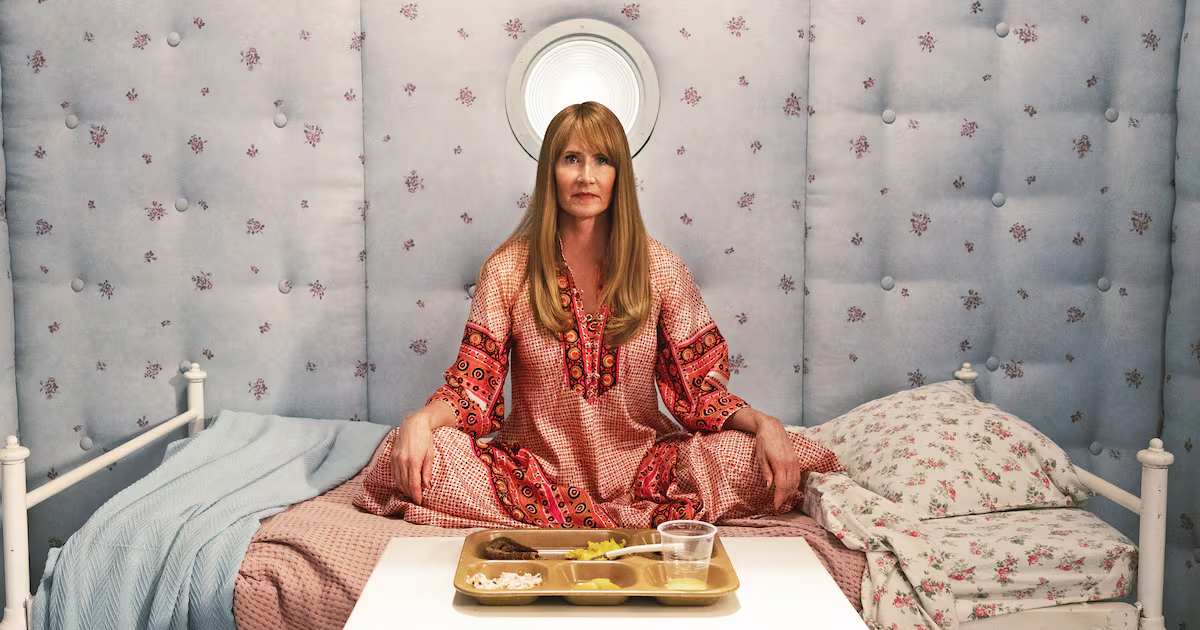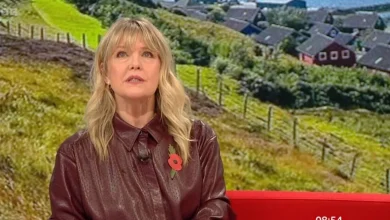Laura Dern Spills the Secrets of ‘Palm Royale’ Season 2

No one is left unscathed by the end of Palm Royale’s delightful and delirious first season. The jam-packed finale included stolen identities, affairs, surprise pregnancies, an attempted assassination, and a bartender taking a bullet for Richard Nixon.
But make yourself a Grasshopper and put on your best and boldest vintage caftan, because the Apple TV period dramedy is only just getting started.
The star-packed cast returns on Nov. 12 with Kristen Wiig’s social striver, Maxine Dellacorte, leading the survival-mode charge in the aftermath of the shocking events at the Beach Ball. Wiig’s Emmy-worthy performance of Peggy Lee’s “Is That All There Is?” is part of a very public breakdown after learning her husband Douglas (Josh Lucas) not only had an affair with her manicurist Mitzi (Kaia Gerber), but has also put a bun in Mitzi’s oven.
But even Maxine’s pariah status has nothing on what friend Linda Shaw, played by Laura Dern, is going through. “Linda was going through a tough time at the end of Season 1, and it gets tougher at the beginning of Season 2,” Laura Dern tells The Daily Beast Obsessed.
Laura Dern. Apple TV+
As 1969 gives way to 1970, the Palm Beach off-season is not going easy on women like Linda, who is accused of attempting to assassinate Nixon. After all, she is a radical feminist, so to the FBI, she is the perfect suspect. It doesn’t help that Linda was holding the smoking gun used by Mary Davidsoul (Julia Duffy) only seconds earlier. Right now, Robert (Ricky Martin), who took that bullet intended for Tricky Dicky, lies in a coma.
The sticky legal predicament comes with a possible death penalty (“That electric chair feels so not me,” Linda says early on), and while political activist Linda isn’t in jail yet, her temporary holding cell has floral-patterned padding. Dern recalls “the incredible moment” when production designer Jon Carlos showed her this set and was struck by the historical facts overlapping with Palm Royale’s irreverent aesthetic.
Creator Abe Sylvia’s secret sauce is the ability to depict the harsh reality within this color-drenched world. “The push-pull and disparity of groundedness to high comedy or farce in this show is what makes it so specifically Palm Royale. Abe likes to call it a melodramedy, and I think that’s right,” says executive producer Jayme Lemons. “We can be very, very serious and have really heartbreaking moments, but then we have a square dance.”
Producing partners Lemons and Dern—whose other projects include the more grounded Tiny Beautiful Things—were initially drawn to Palm Royale’s storytelling duality, in its tone and how the past holds up a mirror to the present. “We felt there was an opportunity to explore all of it: women in American culture, at this time, in this specific place, how it is or isn’t any different [to now],” says Dern.
Carol Burnett. Apple TV+
Overlapping themes continue in the second season. The Oscar-winning actress compares entry into this exclusive Florida society to present-day social media, which Dern calls the “grand club of the world right now.” Maxine still wants in and continues to infiltrate these spaces, no matter how hard powerful gatekeepers like Norma Dellacorte (Carol Burnett) fight to keep her out. Though one place Maxine won’t want to become a member of is Sunny Tides.
Given the wealth of its residents, it doesn’t come as a surprise that Palm Beach has a psychiatric facility (or “loony bin” to use the vernacular of the time) with a name that sounds like a wellness spa. Sunny Tides has the outward appearance of a members-only club, but its specific set of treatments and accommodations taps into similar institutions from the era. “These kinds of ‘vacation spots’ where women were sent when they were a little difficult, or that difficulty was called a nervous breakdown,” says Dern, using air quotes. “So they were sent on vacation to holding cells.”
Amber Chardae Robinson Apple TV+
Dern is glad to discuss the mental health storyline, as it is “a huge part of this season,” contributing to Palm Royale’s tapestry of drawing a line between now and then. “Abe and the writing team, what they learned about what was happening in this country in 1969/70, and what is happening now as a parallel, was fascinating,” Dern says.
Having too many feelings could land you in a facility like Sunny Tides, and the weaponization of psychiatry reflects Palm Royale’s ability to depict reality. “There are big campy fun moments—and Laura talks about this with regard to the acting— all of it is grounded in truth,” says Lemons. “I think Abe has given these actors such delicious material to explore all ends of it, from the gritty realness of things to delicious confections to play with.”
Case in point, the Norma storyline shifting from her health issues to retaining her social maven crown. “All of it is based on the real, honest truth of what the actor is doing. When you think about even what Carol did in Season 1 in a coma,” Lemons says. “Much less what she does in Season 2, well, up and out of the coma.”
Only Robert knows that Norma is not who she claims to be. Her real name is Agnes, and she was Norma’s boarding school roommate. When Norma died in mysterious circumstances, Agnes assumed the identity of the heiress (and her money), and the rest is history. Did Agnes murder Norma to get ahead? In the present, fake Norma will go to any length to protect her legacy—including attempts on Maxine’s life.
Kaia Gerber. Apple TV+
Burnett entering her villain era as a nonagenarian is everything, and Dern looks giddy when I ask her about working with the icon: “First of all, just breathing the same air is like the greatest thing that could ever happen.”
In terms of Norma’s drive to protect her Palm Beach, Dern teases some big surprises: “What you see transpire from [Episodes] 7 to 10 is extraordinary and massively unexpected. It’s amazing to go through the world of emotions that she hurls upon Linda.” Color me intrigued!
Palm Royale moves through its storylines at 100 miles per hour, but Dern notes that Norma is “strategic and stealth, she is at being in the venom and being in the loyalty, she’s like a protector and incredibly dangerous. She plays all these layers from when we met her in Season 1.”
Dern doesn’t spill specifics about how these turns will “shock us in incredible ways,” or how Linda is part of the plot, but gives insight into her co-star’s professionalism: “I had the privilege of being part of that storyline, which is amazing. Not to mention, at 91, [Carol is] the first person on set every time.”
Another subject that is impossible to pry information about is the third season of Big Little Lies. Still, there are similarities between the affluent enclaves and the women who inhabit them. So, who would win in a battle for the society crown between Dern’s BLL character Renata Klein and Norma?
“I respect the villainous nature of that question,” Lemons laughs. “I respect the villainous nature of Norma, but don’t underestimate Renata. I think she takes everybody down if she chooses,” says Dern. “I’m not gonna lie.” Despite being set in two different centuries, a BLL crossover with Palm Royale is the only way to settle this. Stranger things have happened, right?





